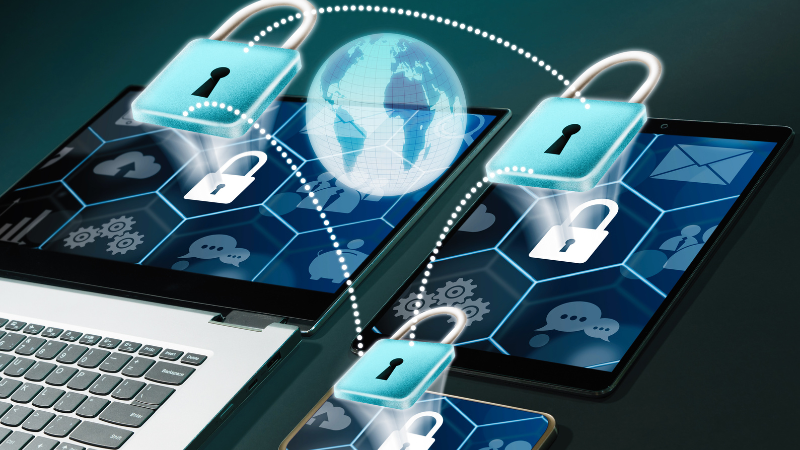Introduction
As a PhD student, your research is your most valuable asset. In today’s digital age, protecting that research from cyber threats is crucial. Cybersecurity is no longer just a concern for IT professionals; it’s a critical responsibility for researchers like you. In this blog post, we’ll explore the importance of cybersecurity for PhD students, potential threats, and practical tips to safeguard your research and data.
Why Cybersecurity Matters for PhD Students

Intellectual Property Protection
As a PhD student, your research is your most valuable asset. Unauthorized access or theft can compromise your:
- Originality: Cyber attackers may steal your research ideas, methods, or results, potentially leading to plagiarism or intellectual property theft.
- Competitive Advantage: Your research may have commercial potential. Unauthorized access can give competitors an unfair advantage.
- Patent and Copyright Protection: Cybersecurity breaches can compromise patent and copyright protection, making it difficult to safeguard your intellectual property.
Data Integrity
Ensuring the accuracy and reliability of your data is crucial. Cyber attacks can:
- Corrupt Data: Malware or ransomware can alter or delete critical data, rendering it unusable.
- Manipulate Results: Cyber attackers may alter data to influence research outcomes, compromising the validity of your findings.
- Compromise Research Reproducibility: Data tampering can make it impossible to reproduce research results, undermining the scientific method.
Reputation and Trust
A security breach can:
- Damage Your Reputation: Unauthorized access or data breaches can raise concerns about your ability to safeguard sensitive information.
- Erode Trust: Collaborators, funding agencies, and peers may question your reliability and trustworthiness.
- Impact Future Funding: Security breaches can jeopardize future funding opportunities, as agencies may view your research as high-risk.
Compliance with Regulations
Depending on your research, you may be subject to data protection regulations such as:
- GDPR (General Data Protection Regulation): Protecting personal data of EU citizens.
- HIPAA (Health Insurance Portability and Accountability Act): Safeguarding medical records and personal health information.
- PCI-DSS (Payment Card Industry Data Security Standard): Securing payment card information.
- FERPA (Family Educational Rights and Privacy Act): Protecting student education records.
Failure to comply with these regulations can result in:
- Financial Penalties: Substantial fines and penalties for non-compliance.
- Reputational Damage: Publicly disclosed breaches can harm your reputation.
- Loss of Funding: Non-compliance can lead to termination of funding or future funding opportunities.
Consequences of Cybersecurity Neglect

Neglecting cybersecurity can have severe consequences for PhD students, including:
- Delayed Graduation: Security breaches can delay research completion and graduation.
- Loss of Research Opportunities: Compromised data or intellectual property can limit future research opportunities.
- Career Implications: A security breach can damage your professional reputation and impact future career prospects.
Potential Cyber Threats
- Phishing and Social Engineering: Scammers target researchers with fake emails, compromising login credentials.
- Malware and Ransomware: Viruses and malware can encrypt or steal sensitive data.
- Unauthorized Access: Weak passwords or unsecured devices grant attackers access to your research.
- Insider Threats: Colleagues or collaborators may intentionally or unintentionally compromise your research.
Best Practices for PhD Students

Password Management and Authentication
- Use Strong, Unique Passwords: Use a combination of uppercase and lowercase letters, numbers, and special characters. Aim for a minimum of 12 characters.
- Password Managers: Consider tools like LastPass, 1Password, or KeePass to securely store and generate complex passwords.
- Two-Factor Authentication (2FA): Enable 2FA whenever possible, using methods like SMS, authenticator apps (e.g., Google Authenticator), or physical tokens.
Data Encryption and Storage
- Encrypt Sensitive Data: Use tools like BitLocker (Windows) or FileVault (Mac) to encrypt files and folders.
- Secure Cloud Storage: Use reputable cloud services like Google Drive, Dropbox, or OneDrive, which offer encryption and access controls.
- External Hard Drives: Encrypt external hard drives using tools like VeraCrypt or TrueCrypt.
Network and Device Security
- Virtual Private Networks (VPNs): Use VPNs on public Wi-Fi to encrypt internet traffic.
- Keep Devices and Software Up-to-Date: Regularly update operating systems, software, and firmware to patch security vulnerabilities.
- Antivirus Software: Install and regularly update antivirus software to detect and remove malware.
- Firewalls: Enable firewalls on devices and networks to block unauthorized access.
Collaboration and Communication
- Verify Collaborators’ Identities: Confirm identities through trusted channels before sharing sensitive information.
- Secure Communication Channels: Use encrypted email services like ProtonMail or Tutanota, or messaging apps like Signal.
- Secure File Sharing: Use encrypted file-sharing tools like ShareFile or SecureFileTransfer.
Additional Resources
- Cybersecurity awareness training programs
- Institutional IT support and resources
- National Cyber Security Alliance (NCSA)
- SANS Institute’s Cyber Aces Online courses
- EU’s Agency for Cybersecurity (ENISA) guidelines
Conclusion
Cybersecurity is a shared responsibility. By taking proactive steps to protect your research and data, you’ll not only safeguard your intellectual property but also contribute to a culture of security within the academic community.
Reference:
Books
- “Cybersecurity for Dummies” by Joseph Steinberg
- “CompTIA Security+ Study Guide” by Wiley Publishing
- “Cybersecurity 101” by InfoSec Institute
- “The Cybersecurity Handbook” by Randy Frietzsche
- “Security in a Box: A Guide to Securing Your Digital Life” by Tactical Tech
Articles and Research Papers
- “Cybersecurity Threats to Academic Research” by the US Department of Education (2020)
- “The State of Cybersecurity in Higher Education” by EDUCAUSE (2020)
- “Cybersecurity Risks for Researchers” by Nature (2019)
- “Protecting Intellectual Property in the Digital Age” by the World Intellectual Property Organization (WIPO) (2019)
- “Data Protection in Research” by the UK Data Archive (2018)
Websites and Online Resources
- Cybersecurity and Infrastructure Security Agency (CISA)
- National Cyber Security Alliance (NCSA)
- EDUCAUSE Cybersecurity Initiative
- Research Data Management and Security by the University of California, Berkeley
- Cybersecurity for Researchers by the University of Oxford

